Some of the most popular and widely recognized dog breeds in the US include French Bulldogs, Labrador Retrievers, Poodles, and Golden Retrievers. We love that these dogs get a lot of attention, but we can’t help but think about some of the lesser-known breeds. So, we decided to create a list of the least popular dog breeds in the US.
As you read through our list, you’ll find that these dog breeds’ obscurity isn’t due to bad personalities or reputations. Many of them are just uncommon or rare, so people don’t really know about them because they’ve never seen them. We’re happy to highlight these wonderful dog breeds and give them the love and attention they deserve.

How Are the Least Popular Dog Breeds Classified?
We’ve classified our list of least popular dogs by referring to the American Kennel Club’s (AKC) Most Popular Dog Breeds.1 This list features 200 dog breeds that are officially recognized by the AKC. It doesn’t include hybrid dog breeds and foundation stock service breeds that have yet to receive official AKC recognition. It also doesn’t include purebred dogs that are recognized by other international dog clubs like the International Canine Federation and The Kennel Club of the United Kingdom.
The 10 Least Popular Dog Breeds
1. Sloughi
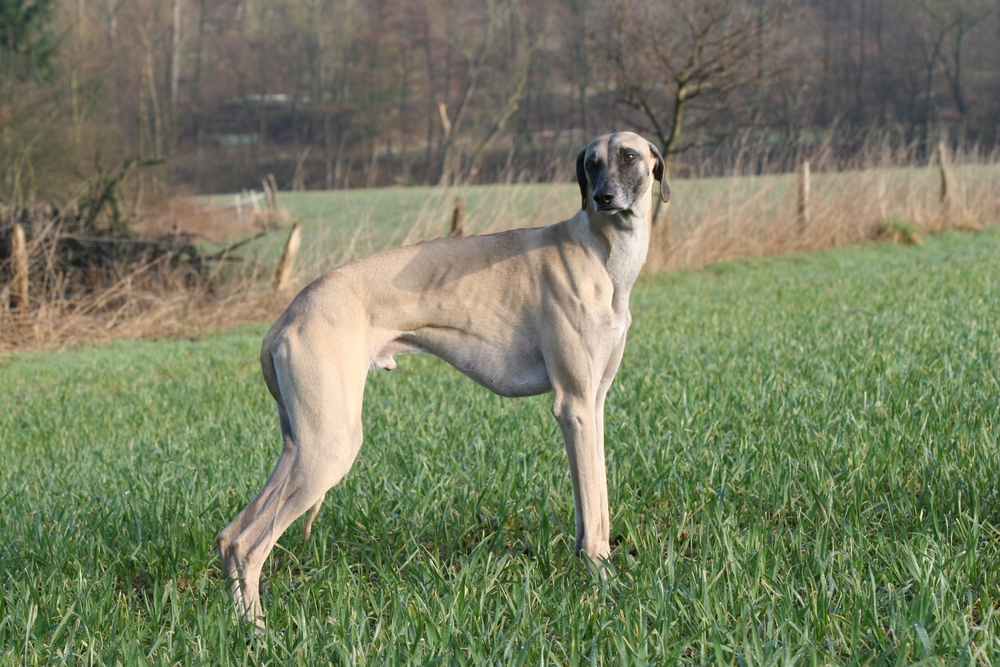

| Height: | 24–29 inches |
| Weight: | 40–65 pounds |
| Temperament: | Reserved, alert, intelligent |
The Sloughi ranks last in the AKC’s list of most popular dog breeds in the US. They’re an ancient dog breed that originates from northern Africa and are also known as Arabian Greyhounds. Sloughis were originally bred to be hunting dogs. While they’re mostly kept as companion pets today, they still have a lot of energy and stamina. They’re athletic dogs that require a lot of daily exercise, and they often make good jogging buddies. Sloughis are initially reserved and may not be the most affectionate dogs. However, they’re loyal at heart and become deeply devoted to their families.
2. English Fox Hound
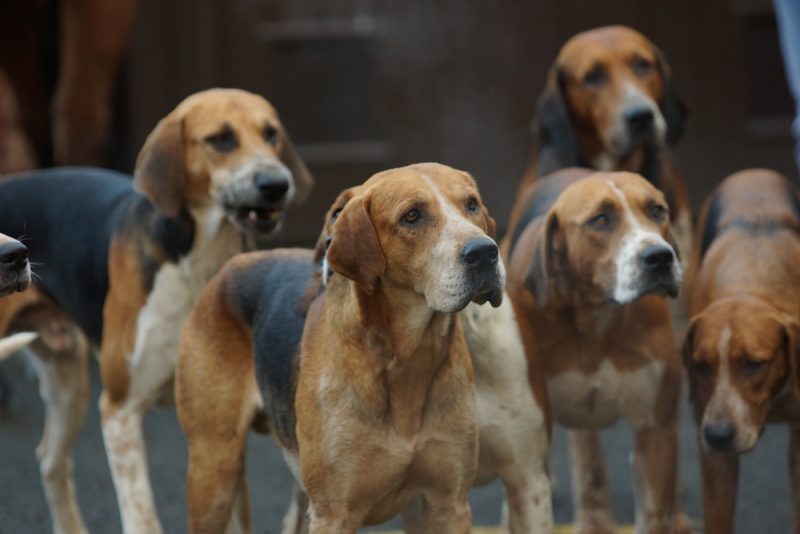

| Height: | 24 inches |
| Weight: | 60–75 pounds |
| Temperament: | Affectionate, playful, social |
The English Fox Hound has hunting roots and was often seen chasing after foxes in England before this sport was banned. Their intelligence and keen observation skills make them reliable hunters. They also have gentle and affectionate personalities and make excellent family dogs. They love being around people and are generally friendly with other dogs. They like belonging to a pack and are loyal to their families. English Fox Hounds do have a lot of energy, so they may feel a little overwhelming for young children, especially when they’re puppies.
3. Norwegian Lundehund
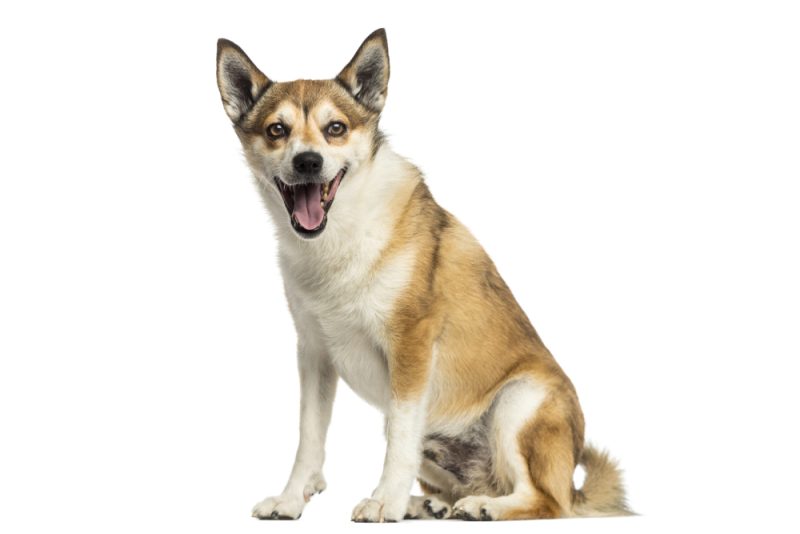

| Height: | 12–15 inches |
| Weight: | 12–18 pounds |
| Temperament: | Affectionate, intelligent, playful |
The Norwegian Lundehund is a rare dog breed in the US and has a generally small population number across the globe. This dog breed originates from Norway and belongs to the Spitz family. They were originally bred to hunt puffins and locate their nests to harvest eggs. Norwegian Lundehunds of today continue to have a strong work ethic and enjoy having jobs and responsibilities. Their intelligence and versatility make them easily employable for a variety of jobs. They even have six toes on each foot (having a double dewclaw), which is said to help them navigate rocky and steep mountain terrains.
4. Grand Basset Griffon Vendéen
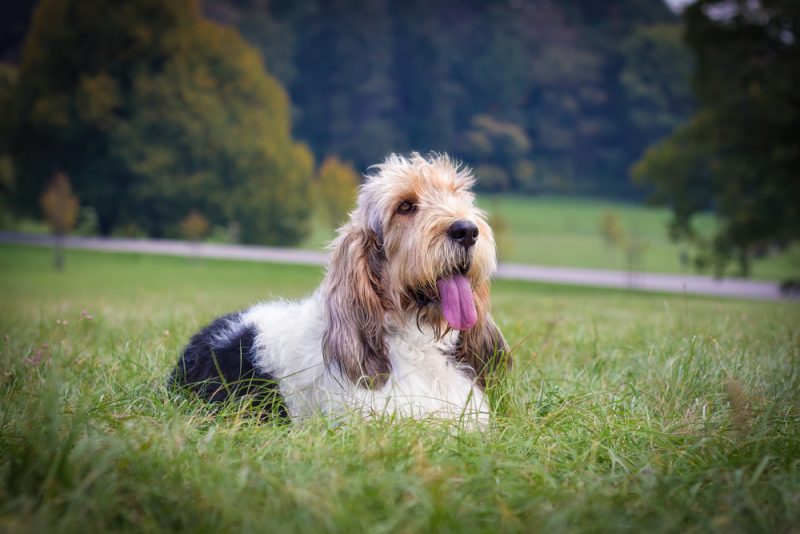

| Height: | 15.5–18 inches |
| Weight: | 40–45 pounds |
| Temperament: | Cheerful, docile, sweet |
The Grand Basset Griffon Vendéen is often mistaken as a shaggy Basset Hound, but they’re a completely distinct dog breed. They were bred to be hunting dogs and would hunt larger animals, including deer and boar. Grand Basset Griffon Vendéens are family dogs that enjoy being with people and other dogs. They don’t enjoy being alone and are fun-loving companion dogs that would love nothing more than to spend all day with their favorite people.
5. Azawakh
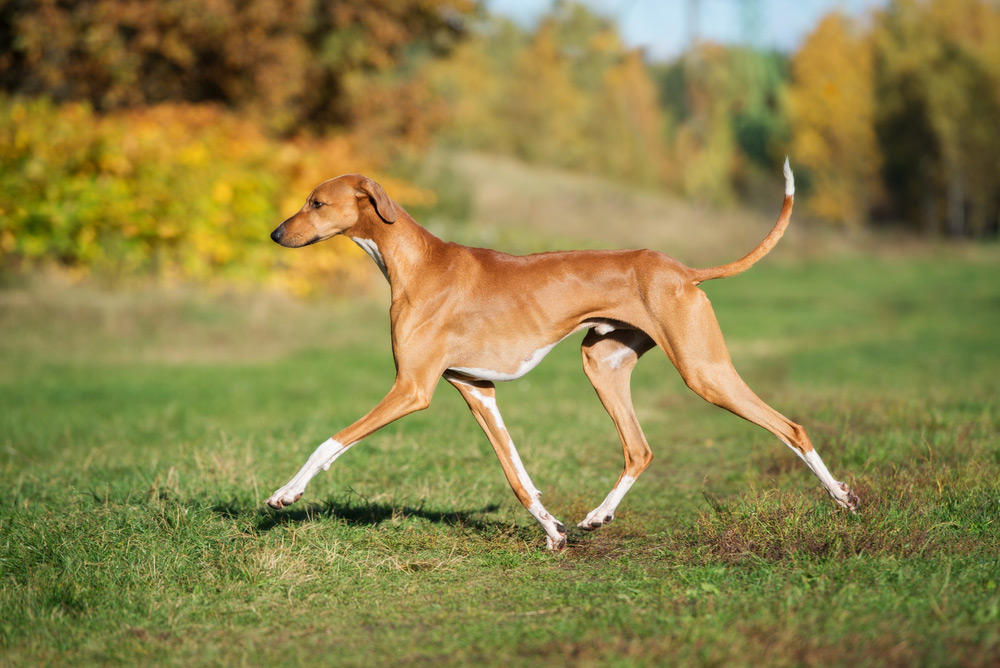

| Height: | 23.5–29 inches |
| Weight: | 33–55 pounds |
| Temperament: | Athletic, gentle, loyal |
The Azawakh is native to West Africa and used to live alongside the nomadic Tuareg people of the Sahara Desert. They were bred to hunt fast prey such as gazelles. Azawakhs have lean and athletic builds, and they’re extremely agile. Their intelligence and devotion to their families make them fast learners, and they often excel in dog sports. While they have a sweet personality, Azawakhs have a lot of energy. They must be in homes with a securely fenced yard so that they can run around freely and expend some of their energy. They also make excellent running and hiking companions.
6. Belgian Laekenois
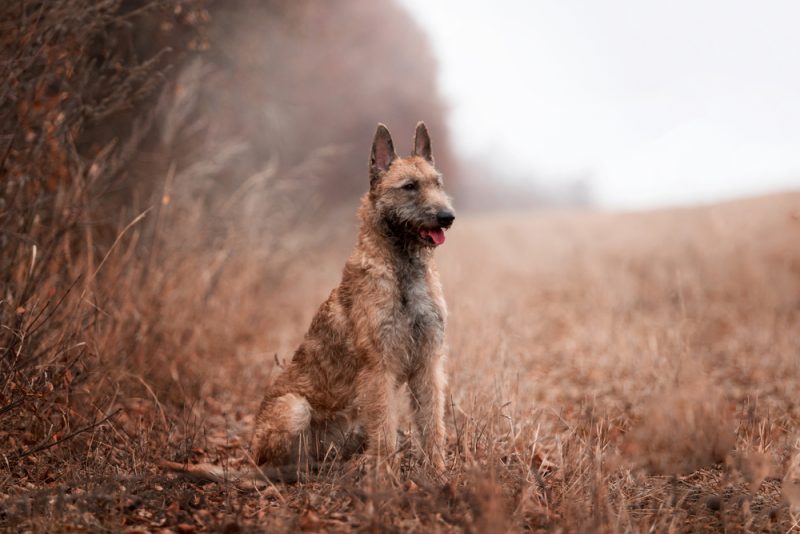

| Height: | 22–26 inches |
| Weight: | 45–65 pounds |
| Temperament: | Alert, eager to please, intelligent |
Many people are familiar with the Belgian Malinois, but the Belgian Laekenois remains relatively unknown. Like the Belgian Malinois, the Belgian Laekenois belongs to the family of Belgian Shepherd breeds and they share similar temperaments. Belgian Laekenois are loyal dogs with a strong and reliable protective instinct. They’re also relatively easy to train due to being intelligent and eager to please. The Belgian Laekenois received official AKC recognition in 2020. So, it’s very possible for this breed to become more common and popular in the next few years.
7. Finnish Spitz
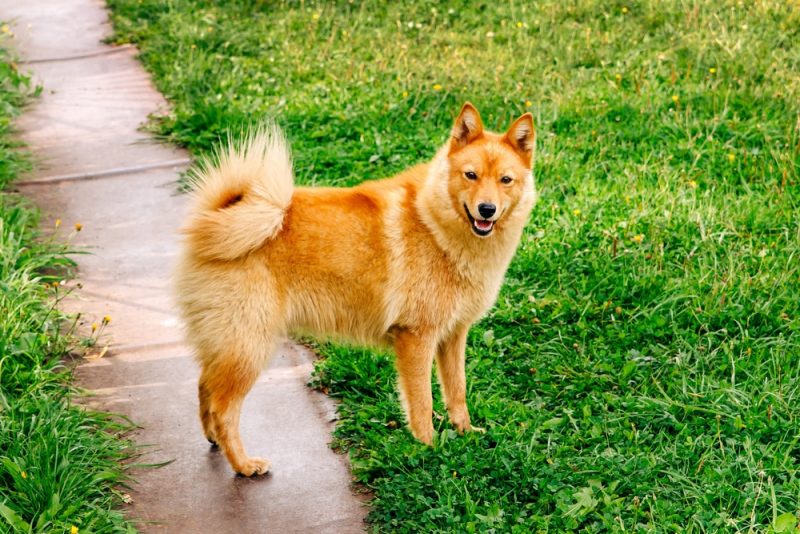

| Height: | 15.5–20 inches |
| Weight: | 20–33 pounds |
| Temperament: | Alert, energetic, playful |
The Finnish Spitz is often mistaken for the more well-known Shiba Inu. As their name states, the Finnish Spitz originates from Finland, and they were bred to be hunting dogs. They have a unique and distinguishable bark, which they use to alert hunters of their game’s location. Along with being talented hunters, Finnish Spitz are wonderful family dogs. They get along with children well and have playful personalities. They do have an independent personality that can make them initially difficult to train. However, they’re often food-motivated, so the right combination of treats and positive reinforcement usually turns them into willing participants.
8. Polish Lowland Sheepdog
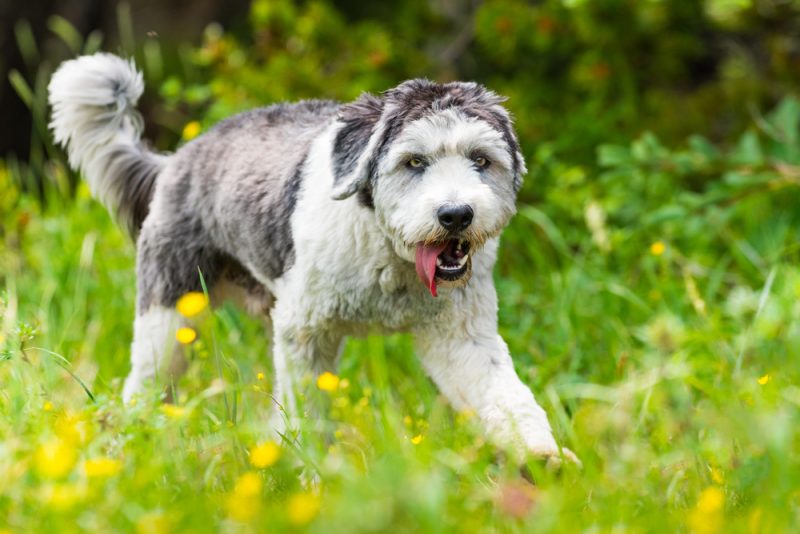

| Height: | 17–20 inches |
| Weight: | 30–50 pounds |
| Temperament: | Energetic, intelligent, hardworking |
While the Polish Lowland Sheepdog isn’t among the most popular dog breeds in the US, they’re quite popular in their native country of Poland. They’re an adaptable and hardy breed, and they’re often seen as watchdogs and herding dogs. Polish Lowland Sheepdogs have a strong work ethic and a lot of energy. Therefore, they’re often a better fit for people with athletic lifestyles who can ensure their exercise needs are met.
9. Cesky Terrier
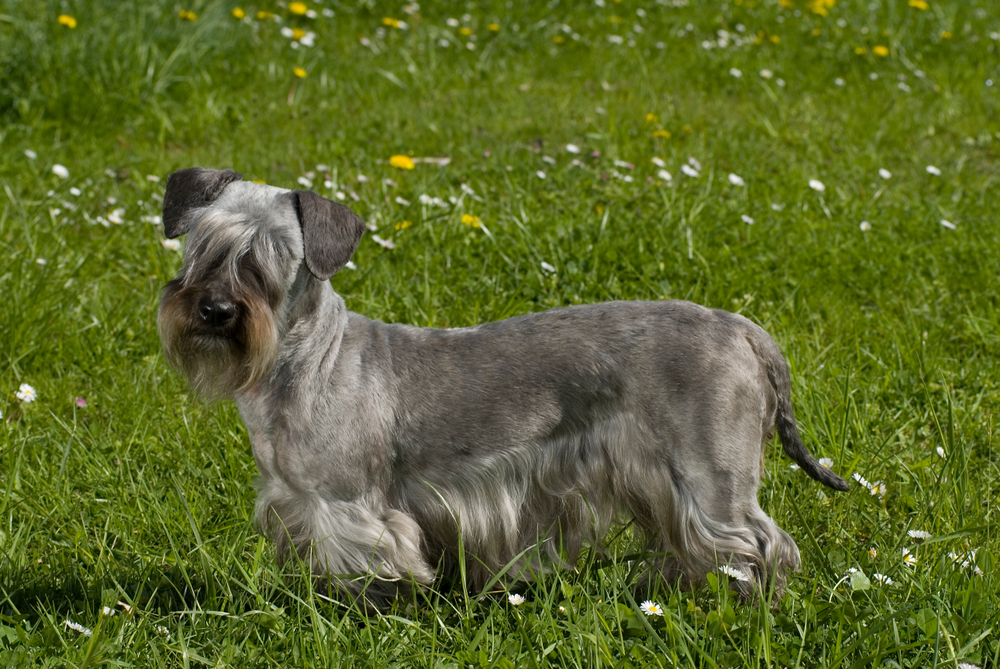

| Height: | 10–13 inches |
| Weight: | 14–24 pounds |
| Temperament: | Alert, cheerful, spirited |
Cesky Terriers, or Bohemian Terriers, are cheerful and alert dogs. They were created by crossbreeding Scottish Terriers and Sealyham Terriers and were originally bred to hunt and chase away vermin. True to their terrier roots, Cesky Terriers have maintained a strong prey drive and often enjoy chasing squirrels, rabbits, and other small animals that cross their paths. Cesky Terriers also make wonderful family dogs. They’re playful and relatively easy to train. They do tend to be reserved around other dogs, but they often become very doting and devoted to their families.
10. Canaan Dog
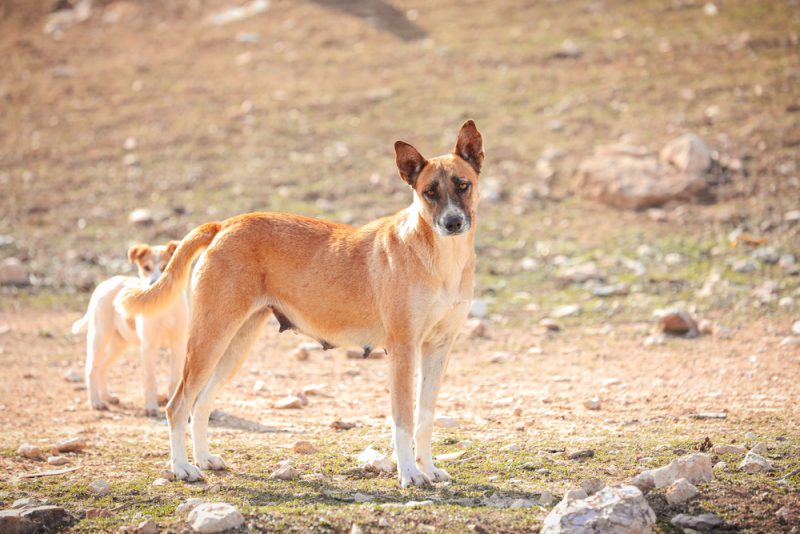

| Height: | 19–24 inches |
| Weight: | 35–55 pounds |
| Temperament: | Athletic, intelligent, loyal |
The Canaan Dog is an ancient dog breed that has lived in the Israeli desert for thousands of years. They’re energetic and intelligent dogs with the potential to become formidable competitors in dog sports.
Canaan Dogs have a strong pack mentality, and they don’t usually like being alone. They may not be the most affectionate dogs, but you can be certain a Canaan Dog will show their affection for you in other ways, like following you from room to room and laying down close to you.


Conclusion
We hope you’ve enjoyed getting to know these lesser-known dog breeds. They remain relatively unknown because of their rarity. So, consider yourself extremely lucky if you ever encounter any of these wonderful dogs in person. They’re special dogs that are worthy of just as much love and attention as their more well-known counterparts.
Featured Image Credit: isDogFriendly.com, Shutterstock






